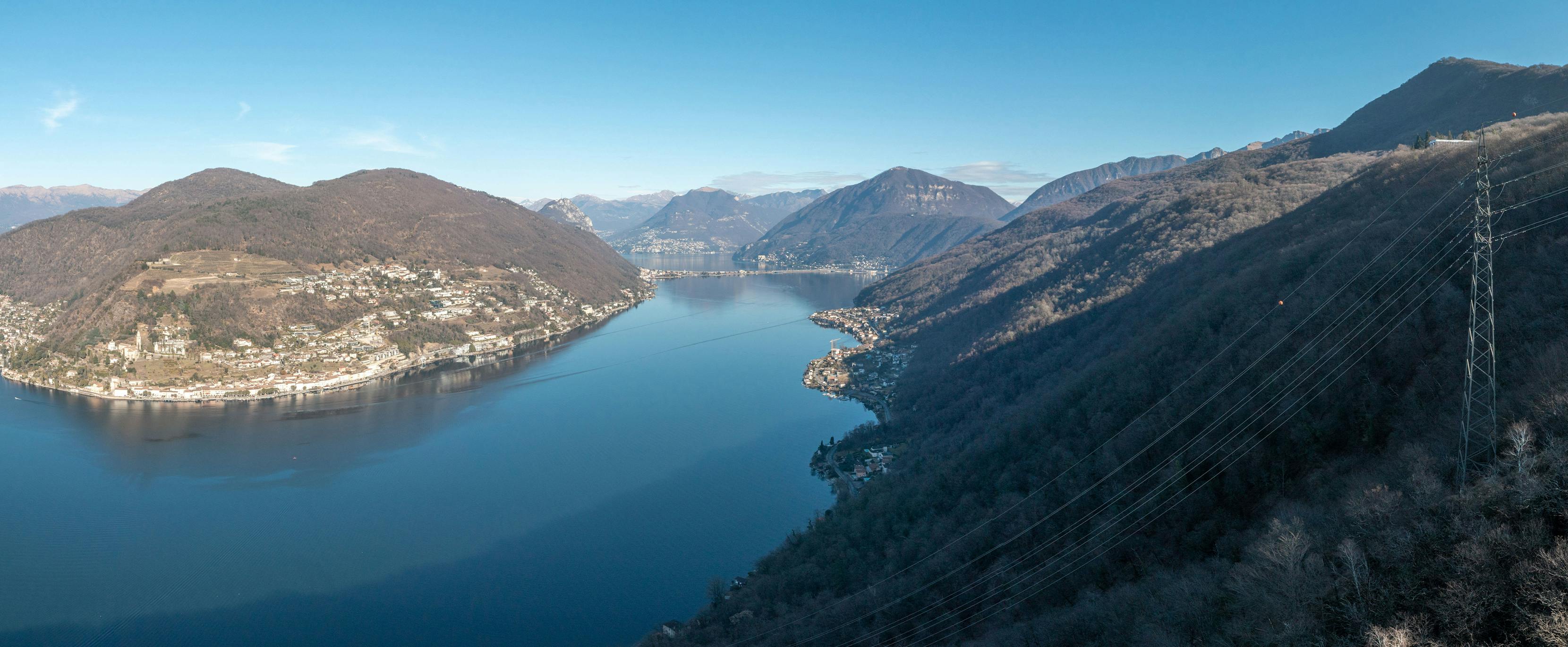
Creative solutions sometimes need to be found to build a power grid that meets Switzerland’s needs. This is certainly true of the submarine cable between Brusino and Morcote, which runs in the depths of Lake Lugano. This cable connection was laid by AET, the company that provides Ticino’s electricity, in the 1980s and extended in 2008. The cables that were put in place over 40 years ago will enter well-earned retirement when they are replaced in 2025. In May 2023, Swissgrid and SBB submitted a planning application for the replacement of the underwater cable between Brusino and Morcote. The power line between Brusino and Morcote is a total of 2.8 km long, consisting of a 400 m land section between the portals and their banks and a 2,400 m underwater cable.
Why was a submarine cable chosen? The decision to run the cable through the lake is not surprising, as the valley floor between Lugano and Mendrisio is narrow and already occupied by motorway and railway lines. A submarine cable is an ostensibly simple feat of engineering, but it poses a number of challenges. We discussed these with AET project manager Amos Castelli, who worked on the project on behalf of Swissgrid and SBB.
How will the cables be replaced? Will you do it one by one or all at once?
Two cable ducts are currently unused. These are reserve pipes, as it were. The process is as follows. First, the new SBB cables will be laid in these empty or reserve pipes. This will allow us to put the SBB line back into operation straight away. The old SBB cables will then be removed. The next step will be to replace the three Swissgrid cables. We will do it this way because a Swissgrid line has three cables, whereas the SBB line has two. There are 12 Swissgrid cables in total, and six of them are to be replaced.
What are the biggest challenges of the project?
Partly for logistical reasons, the project has been devised in such a way that it will be implemented from land. The biggest challenge of the project is to lay 2.4 km of cable from one bank to the other. A boat will not be needed, or would only be used in exceptional cases or unforeseen circumstances. Transitional structures are already in place on the lakeshore at Brusino and Morcote. From there, the overhead lines above ground will transition to buried cables, or submarine cables to be precise. Sleeve shafts will be built to connect the cable sections, each of which is approximately one kilometre long. Generally speaking, these shafts will remain accessible throughout the entire operating phase. From here, the old cables will be pulled out and the new ones laid. This will be done using winches that pull the cables into the empty pipes under the lake bed. All the work will be done from land, so no one will get their feet wet. In addition, the cables in Brusino have to be protected in the canal over a length of approx. 30 metres, to ensure compliance with the permitted levels of electromagnetic field emissions.
Is there a difference between submarine cables and earth cables? Do they have the same lifespan?
Submarine cables and earth cables have the same lifespan of 35 to 40 years. The insulation is also the same. The only difference is that the cables are laid underwater in special pipes, while earth cables (like those in Bözberg in the Canton of Aargau) are laid in a concrete conduit block. The cross-section of the copper cables used is 630 mm2 for earth cables and 300 mm2 for submarine cables. In contrast, the underwater cable can have a smaller cross-section as the waste heat in the cables can be dissipated more easily in the water. The submarine cable pipes are filled with water to ensure the same internal and external pressure and avoid any deformation.
Why does the 150-kV line belong to Swissgrid?
What is special about the project is not only the submarine cable itself, but also the fact that the 150-kV line belongs to Swissgrid and is considered a transmission line despite the lower voltage. Why is that? The 150-kV line is not a line in the cross-border transmission network. However, it is considered a non-cross-border feeder line to this cross-border transmission network. Therefore, in its decision of 12 April 2012, the Federal Administrative Court ruled that the 150-kV Manno – Mendrisio line belongs to the transmission network and should be transferred to the ownership of Swissgrid AG (2C_475/2012 10.12.2012 – Bundesgericht (bger.ch)).






